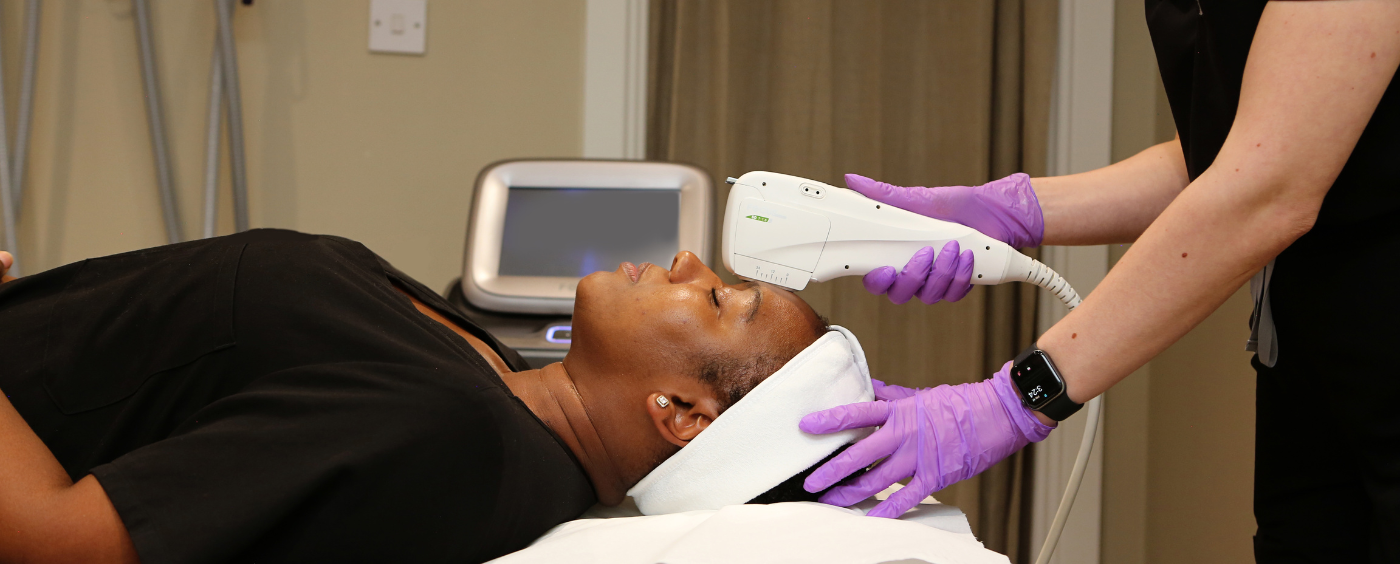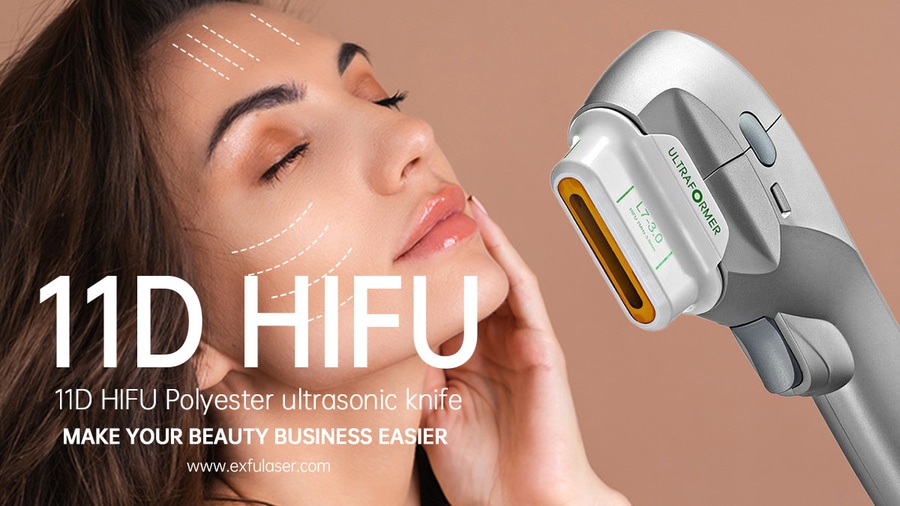Why Choose HIFU for Lifting Without Surgery
Why Choose HIFU for Lifting Without Surgery
Blog Article
Why HIFU Treatment Is the Future of Non-Surgical Facelifts
High-Intensity Focused Ultrasound (HIFU) therapy is quickly developing itself as a frontrunner in the realm of non-surgical renovations, mainly as a result of its capacity to supply targeted skin rejuvenation without the complexities associated with traditional operations. By taking advantage of the power of ultrasound to boost collagen manufacturing, HIFU provides a promising choice that fulfills the expanding need for effective, minimally intrusive cosmetic services. As we discover the intricacies of HIFU modern technology and its myriad benefits, one must consider just how this innovative technique might redefine visual enhancement for future generations.

Understanding HIFU Modern Technology
High-Intensity Focused Ultrasound (HIFU) technology has emerged as an advanced non-invasive treatment option for skin tightening up and training. This advanced method uses focused ultrasound waves to penetrate the layers of the skin, particularly targeting the shallow musculoaponeurotic system (SMAS) and dermis. By delivering exact power at details midsts, HIFU stimulates the body's all-natural collagen production process, resulting in enhanced skin flexibility and firmness with time.
The procedure is performed making use of a portable tool that produces ultrasound power in a controlled way, ensuring marginal pain and downtime for clients (HIFU). Unlike conventional surgical facelifts, HIFU does not require cuts or anesthesia, making it a much safer choice with less dangers and adverse effects. Furthermore, the therapy is adjustable, allowing practitioners to readjust specifications such as strength and deepness according to the individual person's demands
HIFU has actually gained popularity for its capability to supply obvious results without the need for invasive surgery. As modern technology remains to advancement, HIFU represents a significant growth in aesthetic therapies, encouraging effective end results while focusing on patient security and convenience. Its non-surgical nature makes it an enticing option for those looking for a younger look without the associated threats of traditional renovation procedures.
Benefits of HIFU Treatment
As the demand for non-invasive aesthetic procedures remains to climb, HIFU treatment attracts attention for its numerous benefits. High-Intensity Focused Ultrasound (HIFU) provides a distinct approach to skin firm and training, making it an enticing alternative for individuals seeking youthful skin without the need for surgical treatment.
One of the most considerable benefits of HIFU is its capability to boost collagen manufacturing, bring about improved skin elasticity and firmness in time. This natural process promotes a progressive enhancement in appearance, making sure outcomes are both subtle and long-lasting. Additionally, HIFU treatment is non-invasive, which indicates marginal downtime and a reduced risk of issues compared to typical surgical methods.
Individuals can usually resume their day-to-day activities quickly adhering to treatment, making HIFU a practical option for busy people. Furthermore, the treatment is customizable, enabling professionals to tailor it to details areas of problem, whether it be the brow, jawline, or neck.
Comparison With Traditional Facelifts
When considering alternatives for facial rejuvenation, several individuals locate weblink themselves evaluating the advantages of HIFU therapy versus conventional renovations. Standard facelifts involve procedures that reposition underlying cells and get rid of excess skin, resulting in much more dramatic and prompt results. Nevertheless, this strategy needs considerable downtime, prospective problems, and an extensive recuperation period.

The durability of results varies; typical renovations can last for a number of years, whereas HIFU results may call for maintenance therapies every 6 to 12 months. Eventually, the selection between HIFU and traditional renovations hinges on specific preferences, wanted end results, and determination to undertake surgical procedures.
Perfect Candidates for HIFU
HIFU therapy is an excellent alternative for individuals who are not prepared to commit to invasive operations yet still look for efficient facial restoration - HIFU. Ideal prospects commonly include those experiencing light to modest skin laxity and aging signs such as great lines, creases, and drooping skin, specifically in the face, neck, and décolletage areas
Individuals in their late 30s to mid-60s usually locate HIFU especially helpful, as this age array generally experiences the onset of skin sagging and loss of flexibility. Those looking for a non-invasive option to medical facelifts may a knockout post value the marginal downtime associated with HIFU, making it an attractive option for active professionals.
Furthermore, candidates must remain in generally healthiness and have realistic assumptions pertaining to the results. It is necessary for individuals with certain skin problem, infections, or those that are pregnant to seek advice from a certified specialist prior to waging HIFU treatment. HIFU. Ultimately, a complete examination can aid establish if HIFU is the best suitable for a person's specific skin problems and visual objectives, making sure optimum results and contentment
What to Anticipate During Treatment
Anticipation usually comes with the prospect of undergoing HIFU treatment, as people prepare to experience a non-invasive method to facial renewal. Upon arrival, clients will commonly undertake an assessment to review their aesthetic goals and evaluate their skin problem. This tailored assessment permits the specialist to tailor the therapy to every person's demands.
The treatment begins with the application of a gel to the targeted locations, click site which aids in the transmission of ultrasound energy. People might experience a feeling of warmth or mild tingling as the ultrasound waves permeate the skin layers, stimulating collagen production without damaging the surface. The period of the treatment typically varies from 30 to 90 mins, depending upon the areas being dealt with.
Post-treatment, people might notice slight redness or swelling, which normally subsides within a couple of hours. Unlike medical alternatives, there is minimal downtime, allowing patients to resume their everyday tasks nearly right away. Outcomes normally become more apparent over the complying with weeks as collagen continues to develop, causing stronger, raised skin. Overall, HIFU provides a promising option for those looking for effective facial restoration without intrusive procedures.
Conclusion
Finally, HIFU therapy stands for a substantial advancement in non-surgical facelift alternatives, providing a cutting-edge strategy to skin restoration that prioritizes safety and security and efficiency. Its capability to promote collagen production while lessening downtime identifies it from standard surgical methods. As people significantly look for non-invasive alternatives, HIFU's personalized nature and minimized problem risks strengthen its placement as a leading selection in the cosmetic market, leading the way for a future where non-surgical improvements become the standard.
Report this page